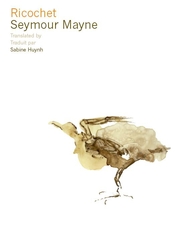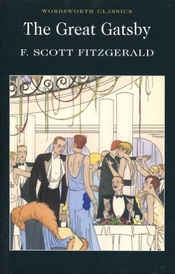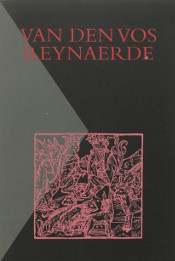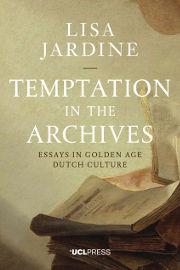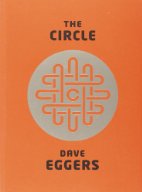Investigating Belgian Colonial Attitudes through Reactions to the Congolese Village in the 1885 Antwerp World Expo
Thanks to its low-frequency, high-quality content, the newsfeed of the Vlaamse Erfgoedbibliotheek (Flemish Heritage Library) is among my favorite library feeds.  Where else are you going to find out about awesome stuff like this newly digitized 19th century book about the 1885 Antwerp Universal Expo? My attention was particularly drawn to the fact that the 1885 expo featured a living Congolese display village.
Where else are you going to find out about awesome stuff like this newly digitized 19th century book about the 1885 Antwerp Universal Expo? My attention was particularly drawn to the fact that the 1885 expo featured a living Congolese display village.
According to the few paragraphs dedicated to the village, this living exhibition was the first of its kind. Exactly what is meant by that remains unclear, keeping in mind that shows like Buffalo Bill’s Wild West certainly precede it. Several Congolese-style huts were constructed for the Congolese people meant to inhabit the exhibit. Following those introductory words it truly starts to get interesting, with a description of the people.
These Congolese certainly form one of the finest African tribes.
The men are handsome, muscular, and they walk straight and firm; the liveliness of their eyes betrays a very great mental activity; the women, much smaller, have a look of great sweetness, and would have given us a fairly high opinion of negro beauties, if it were not for the supreme elegance of their duck walk.
So far, so good, right? It ends with a tasteless racist joke, but all in all it’s not even half as bad as I was expecting. Unfortunately the next paragraph makes a 180° turnaround.
King Massala, who in his country occupied the functions of chieftain of the tribe (or of the village), had in his numerous retinue an interpreter, Congolese like himself, and very fluent in English. That man, the only one with whom it was possible to talk seriously, possessed a remarkable intelligence: his ease of assimilation was such that he understood at the first explanation the goal and the movement of a machine too complicated for a student of our middle schools.
If all of his compatriots are also as happily gifted as him, it will not be difficult to penetrate their country with the civilization of which we are so proud.
You could say it’s a matter of interpretation. Perhaps this can be read innocuously, but I read it as an expression of wonder at the fact that these people might actually be intelligent. That aside, my curiosity about this particular subject hadn’t yet been satisfied, no matter how interesting as the book as a whole was. This was all they had to say about it? How did the presumably less polished regular press react to Massala? Luckily that question can be answered without even leaving your home. At its simplest you can just toss Massala into the search box over at BelgicaPress.

A quick perusal of the results tells us that to be made into a Massala was a cultural reference that any newspaper writer would expect their audience to understand in the 1880s and ’90s. It meant, of course, to be painted black (e.g., Het Handelsblad, 1889-12-17, p. 2 and 1891-03-07, p.1). We also learn of the unfortunate event of Massala’s death in 1895, one of the first negerkoninkskens (little negro kings) to open up his domain to the Assosiation [sic.] internationale, Belgian king Leopold II’s personal exploitation business (Het Handelsblad, 1895-10-25, p.2). Curiously, Massala’s hut from the expo was displayed on the Keyserlei in 1909 for the purpose of colonial week (Het Handelsblad, 1909-06-02, p. 3). But the most interesting article among the bunch that I looked through more or less at random is actually the oldest, from 14 May 1885.
The newspaper opens by saying that one of the group of Congolese answers to the description in a poem by “onze Door” (our Door, popularly known as “den Door”). Theodoor van Rijswijck is a writer who died in 1849, at only thirty-seven years old. He is perhaps best-known for his satirical poems, which served as biting commentaries on the relevant political issues of his day. An example is Santo-Thomas de Guatimala, which deals with a failed Belgian affair in Guatemala. “All who can’t earn their bread in Flanders, because the laws of foreigners hit us so, have the inclination to go to Sint-Thomas.” This refers to an emigration policy to send impoverished Flemish people in that direction, implemented during 1843–1844 by the “foreign”, French-speaking Belgian state. In any case, among all other kinds of ills that might befall you in Guatemala, there is also the local dictator, Carrera.
Ook heerscht daer Carrera, een specie van koning,
Zoo zwart als de satan, zoo naakt als een vorsch;
Die niets dan een suikerkist heeft voor zyn wooning,
Voor rykskroon, een hoed van mahonihout' schors.
Or in an impromptu English translation, where you’ll just have to accept the somewhat awkward second line for the sake of preserving rhyme and meter.
Also there rules Carrera, a species of king,
Black as satan, as a frog naked so stark;
Who has naught but a sugarcase for a dwelling,
For a crown, a hat of mahogany bark.
I imagine that Carrera was called black as Satan because of his many crimes, not because of the color of his skin. But with regard to Massala, Het Handelsblad seems to be of the opinion that inside and outside support each other. “It is him who sold his area to the African Society. In our history we would see him as a kind of traitor; but in the land of little blacks such a sale is not seen as bad, and because it is to our advantage, we find good there what we would find ugly here.” His clothing isn’t up to spec, either.
This Majesty, without pants, is called Massala; he wasn’t wearing any kind of royal cloak when he arrived. On the contrary, he was bundled in old clothing to protect against the cold May weather; but he didn’t lack a certain royal miens. […] Further in his group there are three women, not exactly outstanding in beauty […] and having reached their destination they started smoking like Turks.
[…]
Massala is a well-built guy, whose hair is almost starting to turn gray. […] One of the negroes wore […] a cord around his middle, from which hung a… smoked pipe.
[…]
A peculiarity: the Congo men brought their own fetish, their idol, to protect them in the foreign country. Whether it is a bad or a good god, we do not know. Until now, they’ve been keeping the negroes inside as much as possible; the weather is not favorable to them and they are certainly not fit to stand our climate, just as little as we could stand theirs.
If you want to know more about this subject and then some, there’s a 1993 study available online. It was published in Afrika Focus (Vol. 9, Nr. 3, 1993, pp. 215–237).
Perhaps now you understand why I like books like Anvers et l’Exposition Universelle de 1885. The book itself is of moderate interest, but when you flip through for the pictures and skim the text for interesting tidbits, they provide a marvelous starting point for further explorations of our past.
René Corneli, Pierre Mussely (1886), Anvers et l’Exposition Universelle de 1885.
★★★½
On the Living Congolese Village
Cette exposition, unique en son genre, et dont Anvers a eu la primeur, était organisée sous la direction intelligente du savant général Wouwermans, le sympathique président de la dite Société.
On y a rassemblé tous les produits de l’Etat libre du Congo : des armes, des outils, des instruments de musique et divers échantillons de l’industrie du pays.
Le visiteur sérieux peut y recueillir des renseignements précieux sur la topographie, l’état actuel de la civiliution et les ressources de ces contrées, hier encore barbares, et auxquelles un généreux courant de civilisation ouvre un avenir de travail intelligent et de prospérité.
Quelques huttes congolaises ont été construites à proximité du Sanitarium et servent de cadre au groupe de nègres qui a séjourné à Anvers pendant l’Exposition.
Ces Congolais forment certes une des plus belles tribus africaines.
Les hommes sont beaux, bien musclés, marchant droit et ferme ; la vivacité de l’œil trahit une activité mentale très-grande ; les femmes, beaucoup plus petites, ont le regard d’une grande douceur, et nous donneraient une assez haute idée des beautés nègres, n’était la suprême élégance de leur marche de canard.
Le roi Massala, qui dans son pays occupait les hautes fonctions de chef de tribu (ou de village), comptait dans sa nombreuse suite un interprète, Congolais comme lui, parlant très-couramment l’anglais. Cet homme, le seul avec lequel il fut possible de s‘entretenir sérieusement, était d’une intelligence remarquable : sa facilité
d’assimilation était telle qu’il comprenait, à la première explication, le but et le mouvement d‘une machine assez compliquée pour rebuter un élève de nos écoles moyennes.
Si tous ses compatriotes sont aussi heureusement doués que lui, il ne sera pas difficile de faire pénétrer dans leur pays, la civilisation dont nous sommes si fiers.
Source: René Corneli, Pierre Mussely (1885), Anvers et l’Exposition Universelle de 1885, p. 158.
On Massala and the Congolese
Het is hij die zijne landstreek aan de Afrikaansche Vereeniging heeft verkocht. In onze geschiedenis zou men hem als een soort van verrader aanzien; maar in het land der zwartjes wordt zoo’n verkoop niet kwalijk genomen, en dewijl het ten onzen voordeele is, vinden wij ginder goed wat wij hier al heel leelijk zouden vinden.
Die Majesteit, zonder broek, noemt men Massala; hij had precies geen koninklijken mantel om, toen hij aankwam. Wel integendeel, hij was in vodden en lompen gedraaid om zich te beschermen tegen het koude meiweer; doch het ontbrak hem niet aan eene zekere koninklijke houding. Overigens, Massala heeft reeds veel met blanken omgegaan, en zal hier en daar zoo al iets gezien hebben van europische beschaving.
Verder zijn er in de groep, drie vrouwen, die precies niet uitblinken door schoonheid; deze waren nogal warm ingebakeld, en op hare bestemming gekomen begonnen zij te rooken als Turken. Deze dames, die hier geen fortuin zullen maken, noemt men Zonimbo, Zola — geen familie van den schrijver van Germinal — Zouboudo en juffer Mabotee; verder telt men drie jongens, een meisje en een taalman, Tatee genoemd, die engelsch en portugeesch spreekt en naar europische manier gekleed is.
Massala is een sterk gebouwde kerel, wiens haar zoowat begint grijs te worden. Men zal wel doen die Majesteit en zijne volgelingen, een warm slaaplijf te geven. Een der negers had eene plaid omgeslagen, doch deze deken daargelaten, bestond zijne kleeding in eenige armbanden, eene koord om het middel, waarin eene… doorgerookte pijp stak.
De groep is in eenen omnibus naar de Boomschepoort gereden. Dat rijden kwam Massala heel koninklijk voor, en hij zal thuis gekomen, den tocht in dezen triomfwagen zonder twijfel wijdloopig vertellen. De vertrekken, waar de negers geplaatst werden, zijn boven de militaire bakkerij uitgekozen, zoodat als het zonneke nu wat wil beginnen te warmen, zij van onder en van boven zullen gestoofd worden.
Aan dat goed verwarmde vertrek is eene verandah, waarin zijn, als de zon ook warmte geeft, de frissche lucht komen inasemen. Rooken (cigaren en pijpen) is een groot genoegen voor allen. Overigens zijn die negers niet lui; integendeel, zij zijn altijd met iets bezig. De hutten, die zij in de Tentoonstelling zullen bewonen, ten minste bij dag, hebben zij zelf gereed gemaakt, en zij zullen ook zelf opslaan.
Een bijzonderheid: de Congo-mannen hebben hunnen fetiche, hun afgodsbeeld, meêgebracht, om hen in het vreemde land te beschermen. Of het een kwade of een goede god is, weten wij niet. Tot nu toe houdt men de negers zooveel mogelijk binnen; het weer is voor hen niet gunstig en zij zijn zeker tegen ons klimaat niet bestand, zoo min als wij tegen het hunne.
Bij deze Tentoonstelling zal men de voortbrengsels voegen van Congo-land, die op last van den Koning der Belgen zijn bijeen gezameld. Deze zullen vereenigd zijn in een gebouw, dat te Braine-le-Comte gemaakt wordt. Het is een model van de zoogezegde – standplaatsgebouwen,– die men in Congo opricht.
Source: “De negers van Congo,” in: Het Handelsblad van Antwerpen, 15 May 1885, p. 1.

